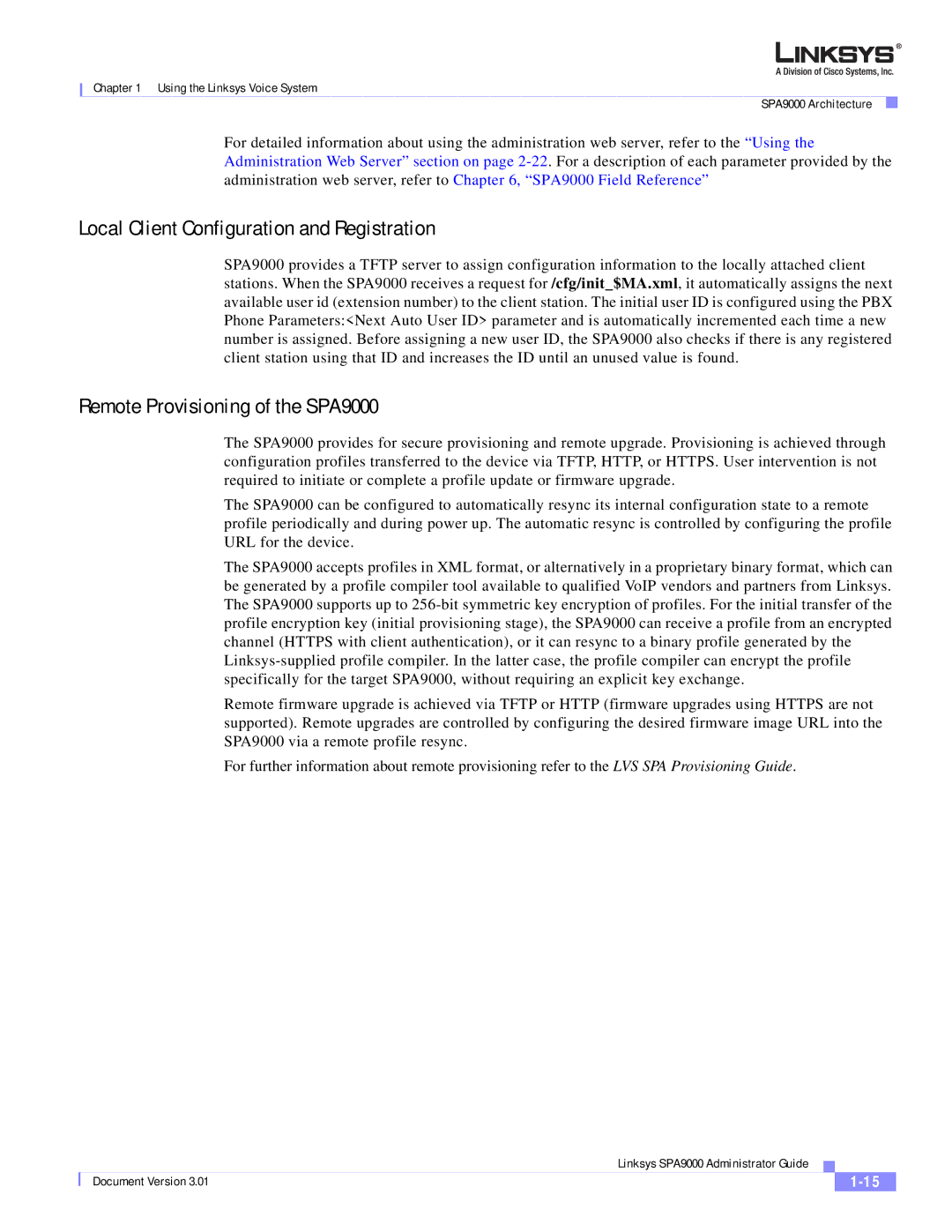
Chapter 1 Using the Linksys Voice System
SPA9000 Architecture
For detailed information about using the administration web server, refer to the “Using the Administration Web Server” section on page
Local Client Configuration and Registration
SPA9000 provides a TFTP server to assign configuration information to the locally attached client stations. When the SPA9000 receives a request for /cfg/init_$MA.xml, it automatically assigns the next available user id (extension number) to the client station. The initial user ID is configured using the PBX Phone Parameters:<Next Auto User ID> parameter and is automatically incremented each time a new number is assigned. Before assigning a new user ID, the SPA9000 also checks if there is any registered client station using that ID and increases the ID until an unused value is found.
Remote Provisioning of the SPA9000
The SPA9000 provides for secure provisioning and remote upgrade. Provisioning is achieved through configuration profiles transferred to the device via TFTP, HTTP, or HTTPS. User intervention is not required to initiate or complete a profile update or firmware upgrade.
The SPA9000 can be configured to automatically resync its internal configuration state to a remote profile periodically and during power up. The automatic resync is controlled by configuring the profile URL for the device.
The SPA9000 accepts profiles in XML format, or alternatively in a proprietary binary format, which can be generated by a profile compiler tool available to qualified VoIP vendors and partners from Linksys. The SPA9000 supports up to
Remote firmware upgrade is achieved via TFTP or HTTP (firmware upgrades using HTTPS are not supported). Remote upgrades are controlled by configuring the desired firmware image URL into the SPA9000 via a remote profile resync.
For further information about remote provisioning refer to the LVS SPA Provisioning Guide.
|
| Linksys SPA9000 Administrator Guide |
|
| |
|
|
| |||
| Document Version 3.01 |
|
|
| |
|
|
|
| ||
